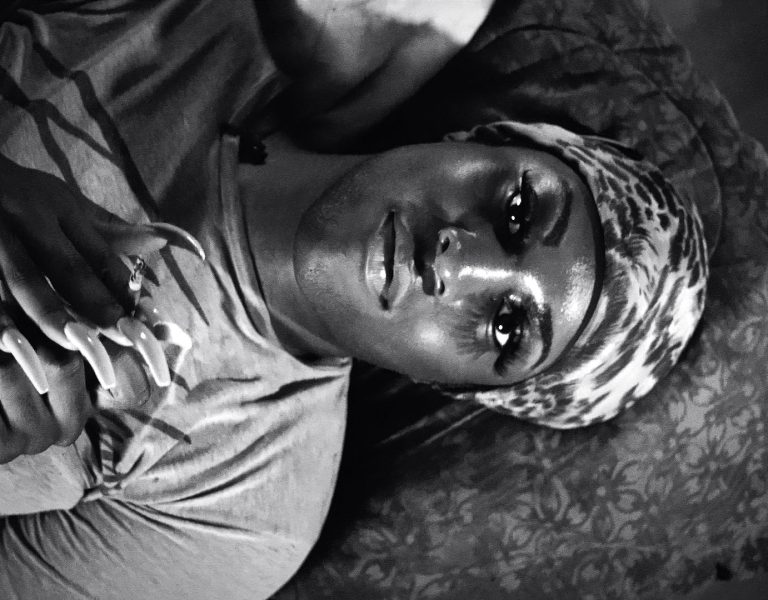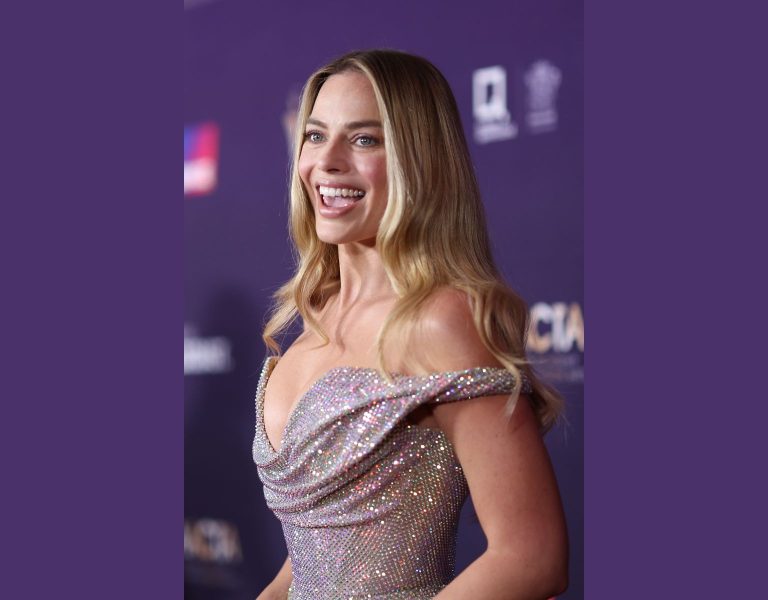TRANSCENDING TIME
Dutch cinematographer Lennert Hillege NSC felt a special responsibility when lensing Steve McQueen’s ambitious documentary, Occupied City. Through “filmmaking at its purest” and adopting an honest visual approach they took audiences on a hypnotic journey through the history of Nazi-occupied Amsterdam that contrasted and connected with visuals of the city during pandemic times.
Lennert Hillege NSC is drawn to projects that are not instantly obvious on paper. “It’s rare you come across directors who embrace that kind of thinking or filmmaking but this was such a unique film. It was so big, and such a long commitment, but it was also not entirely clear what the end movie would be. I think that’s a blessing. How many of those projects do you come across in a lifetime?”
Dutch cinematographer Hillege is recalling “the special filmmaking experience” of lensing director Steve McQueen’s ambitious and expansive Occupied City, a documentary inspired by the illustrated book Atlas of an Occupied City (Amsterdam 1940-1945), written by McQueen’s wife and co-producer of the film, Dutch historian and filmmaker Bianca Stigter.

The crew visited more than 2,000 sites listed in the book and edited the footage captured to produce cinematic release Occupied City, with McQueen (12 Years a Slave, Shame, Hunger) also planning to create an installation-based project using the 36 hours of footage shot. In the expansive 266-minute documentary project – a portrait of Amsterdam, past and present – rather than incorporating archive footage and talking head interviews, calm narration from Melanie Hyams detailing shocking atrocities from World War II collides with current day cinematic documentary images.
“The film puts the viewer in the unusual position of having to negotiate two different elements: what you’re seeing and the information you’re hearing, both of which are very strange,” McQueen highlights. “Out of that negotiation, I think a third thing emerges and I don’t know what that is exactly, or how to describe it, but it’s what I was after.”
The almost meditative examination of the past that still haunts McQueen’s adopted city where he has lived with his wife for 28 years, compares the Germany-occupied Amsterdam of the ‘40s with the present day. Hillege came on board through Floor Onrust, a friend of McQueen and Stigter’s who the cinematographer met at film school. McQueen had also been impressed by Hillege’s work on black-and-white film, Beyond Words (2017). The initial plan for the exploration of Nazi-occupied Amsterdam was “fairly open with no strict rules to follow,” and Hillege is still “unclear if the end result is a documentary or art”.
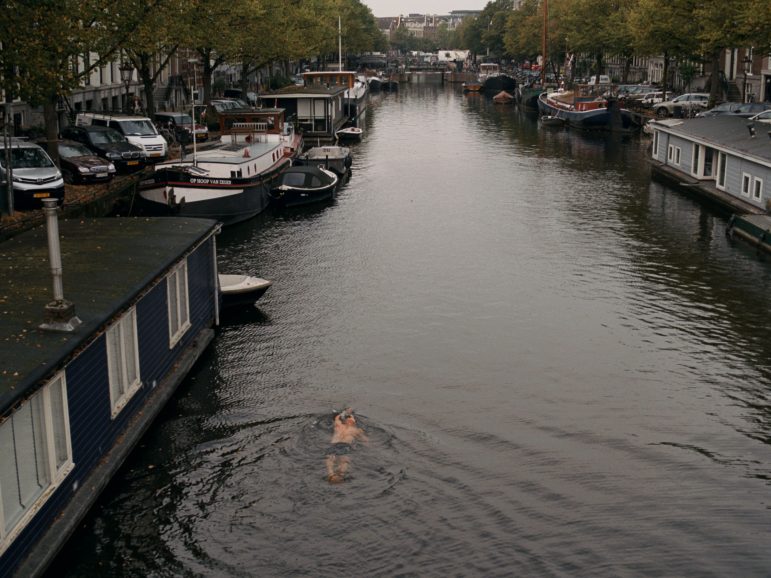
While the team did not want to analyse or discuss the concept too extensively – open to exploration and discovery – they knew they wanted the film to adopt a “monumental style”. “It was all based around the concept of time and finding the small things in each location. We also knew we had 188 shooting days to complete the massive undertaking, so we just got started. Steve and I looked at images and influences such as art and 35mm documentary/essay film London by Patrick Keiller for inspiration.”
But when, just as shooting began, external factors came into play and the pandemic struck, the project took a different turn. With the city under curfew restrictions for the first time since the war, a new, unexpected layer was added to the storytelling. “It gave everything a twist,” says Hillege. “In the beginning, we shot at more exterior locations, but we organically started to become more interior in our approach. It was about finding a new way to communicate through the images.”
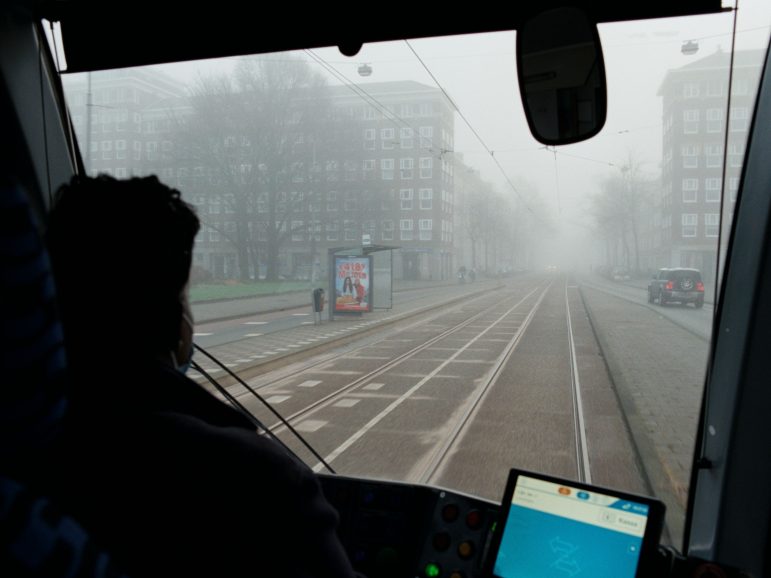
Focusing on film
Before Hillege joined the project, McQueen was already determined to shoot on 35mm film – a creative choice the cinematographer believes “set the tone and value of the film early on”. McQueen agrees his decision to shoot on 35mm film was key to the process: “I wanted each moment to count. Nothing could be of insignificance. It is a very ritualistic and careful process for me because I don’t like to waste film.”
A 4:3 aspect ratio felt like a logical choice for the filmmakers, with Hillege expressing a desire to expose the whole frame. All of Kodak’s colour film stocks were used – as Hillege liked “the warm look offered by Kodak stock” – with the VISION3 50D 5203/7203 and VISION3 250D 5207/7207 most frequently relied upon, and the VISION3 500T 5219/7219 chosen to capture interiors.
Hillege – who felt an archival responsibility to capture the city for posterity – considers shooting on film to be a very considered process: “It wasn’t just pushing a button and waiting – we had to be in touch with the city and our surroundings. We thought carefully about where to put the camera and what we thought was going to happen.

“Shooting on film always felt special and like we were capturing a moment on a medium that has meaning for us. It also gave everyone a focus for the 188-day shoot, whereas shooting digital would have offered less sensitivity. Our editor knew when we pushed the button to shoot, it was for a reason and they had to find something within that footage.”
Processing took place at Haghefilm Digital in the Netherlands, a lab Hillege had worked with in 2006. As the company was relocating, they worked in collaboration with Color by DeJonghe in Belgium to complete the processing. “We were trying to capture as much in camera as possible, so we didn’t want any tricks to be carried out during processing. That stage needed to be natural rather than controlled. If you tweak anything it interferes with the overall feel,” says Hillege. “Steve is a pure and honest director who wants a clear approach, so we never discussed how to control the image or give it a look. We wanted more of a photographic quality rather than what you might expect with traditional filmmaking.”
Shooting a documentary and being as inconspicuous as possible, especially when capturing more intimate moments, required a quiet camera. “And as we were shooting for such a long period I wanted to buy my own camera. Add on top of that my desire to shoot full frame so the whole negative was exposed, and the camera options were further reduced.”
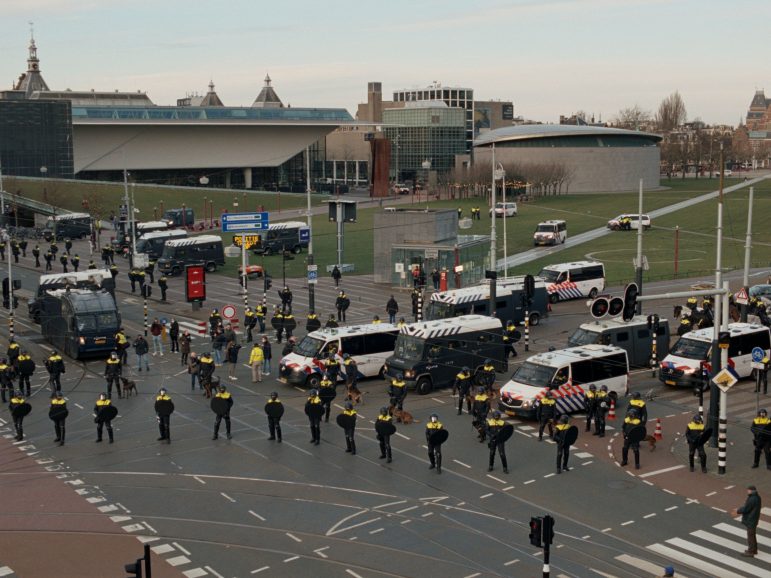
Hillege sought the advice of Danny van Deventer from maintenance and repair company Cine Facilities in Amsterdam who suggested using an Arricam ST body – “a heavy but quiet film camera body” – and adapting it so the cinematographer could use the lighter Arricam LT magazines.
“Danny understands the art of preserving film cameras. He maintains all the equipment in pristine condition and delivers workshops. As well as repairing cameras for the biggest DPs around the world he’s also a talented focus puller,” says Hillege.
“He helped create a studio film camera offering the most lightweight set-up, removing everything we could to leave us with a basic camera with no speed settings. The hand grip system was also altered to make it even more lightweight. We never had any problems, even in all weathers and when moving the camera 12 times a day, in and out of a car, on bikes, in stairways, in the rain, snow, and sun, and without a grip.”
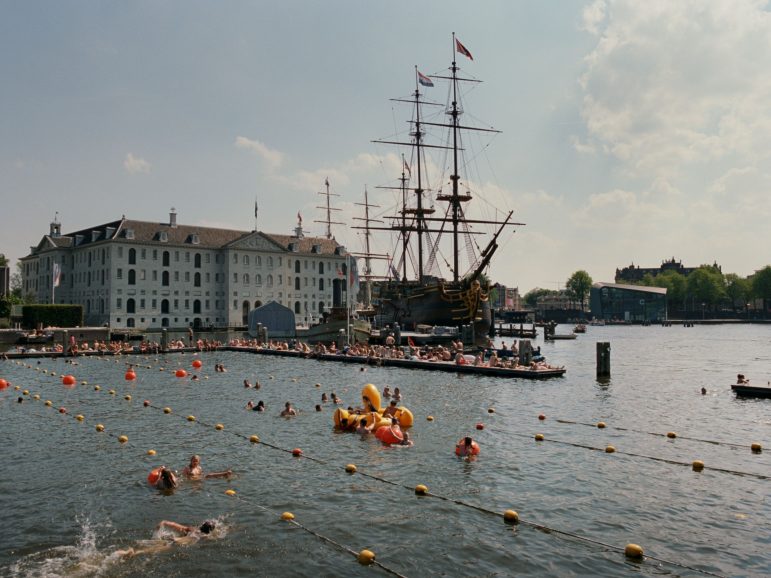
Hillege wanted “simple lenses that did not interfere” and would allow him to capture an “honest and clear” image when operating. To fulfil the archival responsibility he felt when making the film, he opted for a set of nine 18-135mm Leica Summilux lenses.
Primarily opting for a fixed camera, Hillege incorporated Steadicam on occasions for dramatic effect or to capture events such as King’s Day [a national holiday to commemorate the birthday of King Willem-Alexander] or the feeling of freedom when shooting one of the first parties held during the pandemic. The filmmakers also wanted the camera to “float through the city” for a select few shots to convey the liberation when the curfew was lifted. For this, Hillege shot at an elevated position to “disconnect from people’s normal point of view and to open up how they see the city.”
To keep the crew contained it was not possible to add a key grip or dolly grip. “Before you know it, you’re contaminating the location too much and becoming too noticeable,” says Hillege. “It was interesting to see how quickly the crew adapted to being invisible through using their body language. By putting the camera in the middle of a square with the viewfinder aiming backwards, and the crew looking in a different direction to where the lens was pointing, people didn’t feel threatened. We sort of became wildlife photographers.”

The cinematographer admits finding the best spot to position the camera was not simple in every location. “This model might not be the obvious choice due to its size, especially if you needed to maintain a position, but we almost developed a spider-sense about where to place the camera, always shooting four-minute rolls or less rather than 1,000-foot rolls.”
Largely working with natural light, the cinematographer used minimal lighting fixtures such as a small Creamsource package when needed for shooting at more complicated locations such as the Rijksmuseum. “I always had a small LED in the van, but we didn’t have the manpower to constantly set kit up unless it was necessary,” says Hillege, who read each address as a “light situation” and often preferred to reshoot at a different time of day rather than “alter it with artificial tricks”. If a spot was too dark, they might return at magic hour. And as the crew had an intimate relationship with the city, they knew the best time of day to shoot for the sun to be in the desired position.
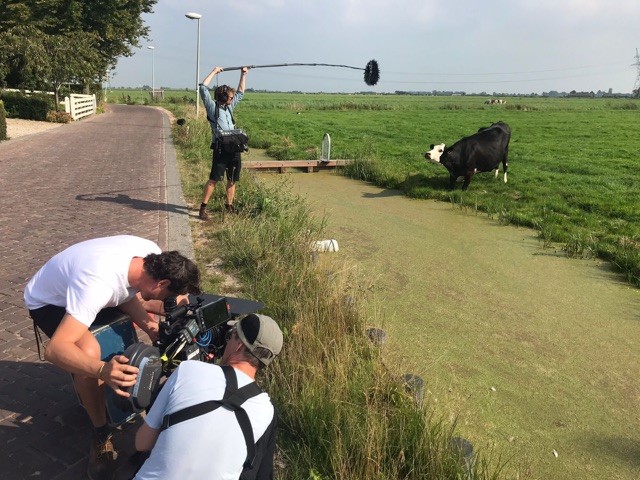
A personal journey
Scouting all locations by bike with 1st AD Koen van der Knaap demonstrated to Hillege the importance of being in touch with the city, which that mode of transport allowed. Working in a small and nimble team once the shoot commenced, the crew travelled around the city on bikes. The sound recordist travelled on a bike with a container attached to hold his equipment and the clapper loader travelled in a small camera van with a darkroom which also transported the equipment and a table which Hillege could stand on if he needed to capture an elevated view of the city.
Some locations provided little footage whereas other sites or events such as the ceremonial gathering for King’s Day offered an abundance of material, with the crew adopting a news-gathering approach to capture the activities. “We became a very robust machine, like a Formula One car. We had to quickly set up, shoot, and be ready to cycle to the next place and repeat it all again,” says Hillege. “Every address offered a new story and some of the 2,025 locations visited needed five set-ups, so a crazy amount of energy and focus was demanded of everybody in the small intimate team. It was a very personal journey for everybody.”
Every two weeks the team gathered for a two-hour viewing in a cinema, allowing them to see if they were intervening too much in what was taking place at each location and if a different approach was required. “We were constantly viewing and responding to each other’s work, so I could see how the editor Xander Nijsten worked and vice versa. It’s very rare you can shoot while developing visual language like this,” says Hillege. “Xander did an excellent job at filtering out some things and finding the best moments.”
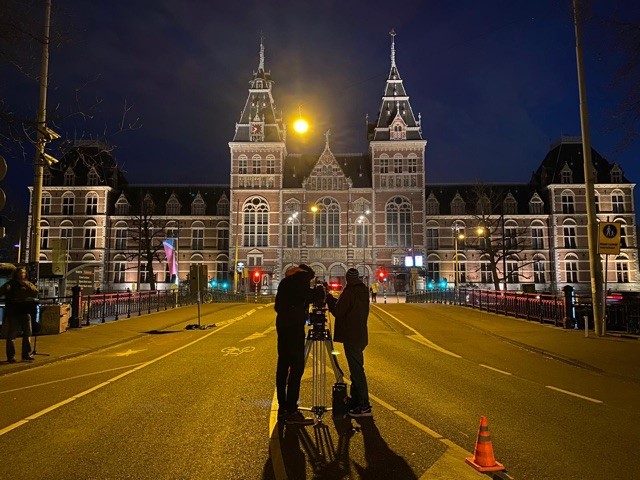
Making such an unusual film with such great ambitions was a sizeable responsibility for the cinematographer who also jokes that on occasions he “felt more like a door-to-door salesman than a DP, ringing the doorbell and saying the same old story again and again.” Throughout the process the hope was that whatever the filmmakers discovered at each location was not too literal.
“That was one of the greatest challenges as if there’s still evidence of something taking place in a location that is linked to the war, it was difficult not to film it. Shooting during the pandemic, you felt similarities to World War II – people in protest or curfew limitations – but it was never the intention to shoot it in an obvious way. We wanted viewers to form their own interpretation and find the confrontation and connection between the past and present.”
If the filmmakers had complete control over a situation, it became a “boring piece” with an obvious connection. “It felt wrong, dirty, or cheap. This project was about capturing an interesting image without guiding the eye too much, but also not becoming like a security camera,” says Hillege. “This film was a big reset for me as a DP because there was no control. It was liberating and I learnt to not be afraid, to be open, and to trust your instinct. Life is beautiful and it doesn’t matter where you are, there’s always something to find. It was filmmaking at its purest and I’ve never had such an intimate relationship with a production that is so true and honest.”



